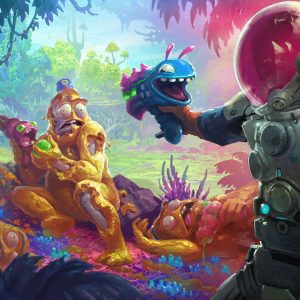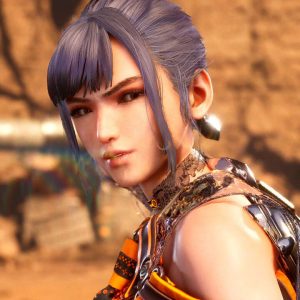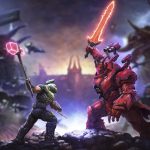June’s IGN First is focused on Final Fantasy 16. With less than a week until the game finally makes its way to the PS5 on June 22, it is time for our final Final Fantasy XVI exclusive. It might sound like we’re getting ahead of ourselves, but we asked the game’s developers to talk us through New Game Plus, where the higher difficulty Final Fantasy Mode offers returning players a whole new challenge.
In our exclusive gameplay video (see it above), Director Hiroshi Takai and Combat Director Ryota Suzuki explain how the enemies you fight will change on your second playthrough.
“On your first playthrough, you can choose between the Action Focused mode and the Story Focused mode,” explains Takai. “After you beat the game in either of these modes, New Game Plus unlocks, and you can carry protagonist Clive’s level, gear and abilities over to your next playthrough. New Game Plus also features a new mode, called the Final Fantasy Mode, which makes the game more challenging.
“Since you can continue your level and abilities from a previous playthrough, in Final Fantasy Mode, enemies will become stronger accordingly. The positioning of enemies is different, and in many cases the enemy type itself is entirely different as well. You might suddenly be confronted by an elite monster that wasn’t there on your first playthrough.”
In our video, you can see examples of how enemies change in the Greatwood stage near the beginning of the game, as well as the Inner Sanctum of Drake’s Breath, a location you visit mid-game. While wolves await you on your first playthrough of the Greatwood, in New Game Plus, Minotaurs stand in your way. Fafnir, a boss you meet somewhere halfway through the stage, is now replaced by a Chimaera.
One of the fiercer enemies you face at the Inner Sanctum of Drake’s Breath during your first playthrough is a towering enemy that wields a heavy axe. Having to face two of these brutal enemies at the same time in New Game Plus would be one thing, but one of them is instead replaced by an Iron Giant, one of Final Fantasy’s most iconic baddies, which made its first appearance in 1988’s Final Fantasy II.
“Expect tons of surprises like that. ‘But that wasn’t there before!’ you might say to yourself,” Takai says with a chuckle.
Of course, a shuffled set of enemies is not the only way Final Fantasy XVI’s New Game Plus shakes things up. You will also become able to upgrade your weapons to a higher level. While on your first playthrough weapons can only be upgraded up to three degrees, New Game Plus allows the player to upgrade weapons up to six degrees. If you upgrade a weapon to the sixth degree it will reach its maximum potential and it will change to a different item name.
In New Game Plus you can synthesize accessories as well, which according to Takai adds a whole new layer of customization.
“As you will be carrying over the items you obtained on your first playthrough, you will be obtaining multiples of the same accessories,” says Takai. “The blacksmith can synthesize these for you into one accessory with a +1 attribute, which makes it possible to create builds that match your playstyle even better.
“For example, let’s say that a certain accessory allows you to shorten the recast time for abilities by two seconds. By having two of these accessories synthesized into one, that becomes four seconds. You can even go as far as separately equipping one more of these accessories, which would allow you to shorten the recast time up to six seconds. There’s a wide variation of accessories that have different effects, and synthesizing them will allow for a new layer of depth in New Game Plus.”
In the game’s Arcade Mode, you can replay stages that you have finished before. Here, you will be scored according to how you perform. In New Game Plus, a leaderboard makes it possible to compete against players from around the world for the highest score.
“Arcade Mode doesn’t just let you replay stages, but it adds a score to your performance,” says Takai. “This score increases as you defeat enemies and use abilities. Trying to get a higher score might feel a bit like how you would do so in a classic shmup. After a mid-boss, a result screen appears that evaluates your performance with a grade. Once you finish the stage, an additional result screen will indicate your score and grade for the entire stage, and you will receive a bonus according to your performance. Players who compete seriously on the leaderboards might rack up S rank scores, but it will be interesting to see how far they can extend their score from there.”
As for why the main game doesn’t show player scores and grades, Takai says that he didn’t feel the need to evaluate the skill of players who are casually enjoying the game.
“Above all, we wanted players to be able to enjoy the story without anything standing in the way,” says Takai. “The same goes for the game’s combat. I think many players don’t want to be evaluated by the game when they’re just there to have some fun. For example, if the game keeps giving you a C, it can make you feel like you’re being told over and over that you are bad at the game. We didn’t feel the need to do that to players who just want to have fun, so we saved it for the players who actively want to compete on the leaderboards in Arcade Mode.”
Takai tells us that there is also a mode called Ultimaniac, which is even more difficult than Final Fantasy Mode. For players who are up to the challenge, Arcade Mode offers a leaderboard for this difficulty too.
“It’s so difficult that I’m not even sure if I can beat the game on that difficulty myself,” admits Takai. “But if you’re a die-hard action game fan, it might be a welcome challenge.”
Besides Arcade Mode, Chronolith battles – a sort of battle mini-game – also come with a leaderboard in New Game Plus.
“In different areas of Valisthea – the realm where the game takes place – Chronoliths are hidden,” explains Takai. “Once you have progressed to a certain point in the story, these standing stones will start to emit a blue light. By accessing them, you will be challenged to a special battle, which we call Chronolith Trials. The main concept behind Final Fantasy XVI’s combat is that the player can combine different Eikon abilities to create builds that match their own play styles. However, for the Chronolith battles we wanted to limit the player to certain Eikon abilities and test their skills in what plays out like a time attack.”
If you want to know more about Final Fantasy XVI’s Eikon abilities, be sure to check out our feature on that as well. In this feature, Takai and combat director Ryota Suzuki explain how they hope abilities will function as tools for the player to find their own way of tackling the game’s enemies. But by forcing the player to use a specific build, the Chronoliths might make you more comfortable with certain Eikon abilities you had ignored until that point.
“The time limit for these battles is 1 minute and 20 seconds,” says Takai. “You have to defeat multiple waves of enemies within that time. That being said, by accomplishing various tasks you can actually regain some of that time while fighting. For example, one of those tasks might demand that you defeat an enemy by using a certain ability in the air. If you succeed, you will get a few seconds back. This will become key if you want to beat the challenge before your time runs out.
“After a few waves, a boss designed especially for these challenges awaits you at the end. By defeating it within the time limit, you can obtain an accessory found only here. In New Game Plus, not only the difficulty but also the types of enemies you will fight here changes, and there is a leaderboard as well.”
Since the Chronolith Trials are essentially time attacks, Takai thinks that their speedy nature makes them a good starting point to join the leaderboards.
Based on Takai’s explanation, it seems that most of the features in New Game Plus are related to the game’s combat. Takai believes that Final Fantasy XVI’s combat is highly replayable.
“Final Fantasy XVI offers the player a wide array of abilities,” he says. “Try out an ability that you had avoided before, and you should be able to find new ways to enjoy the game’s challenges. The variety in gameplay these abilities provide always make it fun to come up with new builds. That’s why we designed Final Fantasy XVI so that it could be enjoyed through multiple playthroughs.
“On your first playthrough, Clive will learn these abilities little by little, so he won’t be able to use all of them from the get go. On your second playthrough, you can bring all of your abilities to the beginning of the game, so the game will feel more diverse from the start.
“In New Game Plus, we’ve also made it possible to skip the first part of the game in which Clive looks back at his childhood. Of course, all cutscenes can be skipped as well, so you can really focus on the combat.
“Final Fantasy XVI really has a lot of replayability. So for those looking for a new challenge, I hope you revisit the game after you roll the credits.”
Final Fantasy XVI releases for PlayStation 5 on June 22. Be sure to check out boss battle gameplay against Liquid Flame, gameplay of hunting a wanted monster in one of the game’s overworlds, and a feature on the game’s side quests. Also, don’t forget to check out which classic Final Fantasy games the developers consider their favorites.
Esra Krabbe is an editor at IGN Japan. Please don’t evaluate his skills.
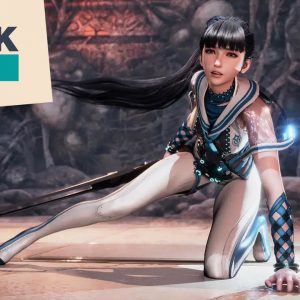

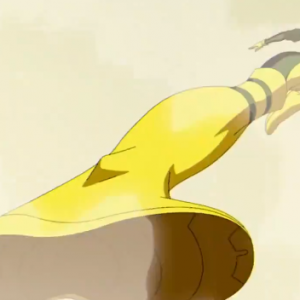



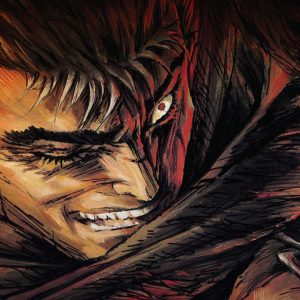
the1.21updateofficialnameis..._minecraftmonthly-youtube-googlechrome4_26_20242_39_36pm-300x300.png)

